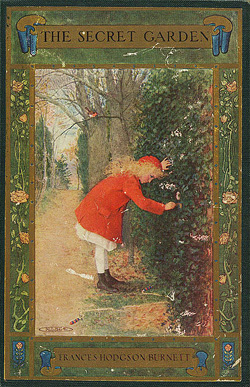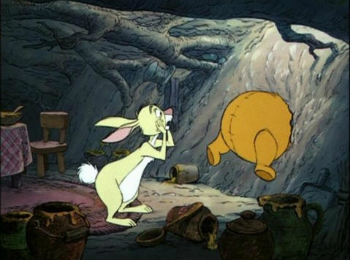6 Jobs That Are Super Racist, And Nobody Seems To Care

Despite it being 2000-whatever futuristic year you're reading this in, racial discrimination is still happening in the workplace, with plenty of bosses continuing to hire as if the amount of melanin in your skin determines how good you are at spreadsheets. But a lack of diversity is a problem for more than the government and the Oscars. Plenty of seemingly open-minded industries are still whiter than at the all-you-can-eat mayonnaise buffet at a New England model train convention. And they're in no hurry to change that. For example ...
The Fashion Industry Is Getting More Racist
If you've looked at any recent fashion magazine or show, you may have noticed that the industry has about as much ethnic diversity as Dave Matthews Band concert. This is part of a long tradition of believing that only white people can be hot, and that white people will only buy clothes if they're being worn by other, hotter white people.
Statistics clearly show that the fashion industry has been bleached like a supermodel's butthole. In 2012, Vogue was criticized for having only 14 covers in its entire history which featured minorities of any kind, out of over 1,400 total. Overall, only 14 percent of all fashion magazines featured people of any nonwhite ethnicity. Much to the fashionistas' surprise, calling something else "the new black" every season doesn't mean they get counted toward your diversity hires.

Hey, wait a minute. Weren't there a bunch of black supermodels in previous decades? Sure, '80s and '90s fashion was never going to win any diversity awards, but at least it had met its specific "intimidating black women" quota with the likes of Naomi Campbell, Tyra Banks, Iman, and Grace Jones. So what the hell happened? According to Bethann Hardison, one of the first black models in Europe, the rise of brands like Gucci and Prada are to blame. These brands are fond of "aspirational marketing" (directed toward people who can't actually afford the product) to white people, which led to an increase in ads featuring white models. At the same time, the responsibility for casting models for shoots went from the designers to casting agents, who were a bit more preoccupied with marketing than supporting art and diversity.
But even the black supermodels we mentioned still get passed over for the same skinny white girls they've been fighting all of their careers. In 2012, Claudia Schiffer and Karl Lagerfeld worked on an ad campaign for Dom Perignon which featured Schiffer wearing clothes from different cultures around the world. Which isn't necessarily a problem in itself, but then they decided to take it a step further and go full minstrel show:

That's the very white and very blonde Schiffer sporting an afro, darkened skin, and the exact expression that millions of people wore upon seeing the ads.
Likewise, in 2006, the British newspaper The Independent ran a special edition (edited by Bono) featuring stories about AIDS in Africa, and the front page (designed by Giorgio Armani) pictured Kate Moss wearing a ton of black body paint and nothing else:

But it's not like there was a black model who was a member of an elite group of models called "The Big Six," which included Schiffer and Moss, so what were they to do?
The Advertising And PR Industry Is Still Stuck In The Mad Men Era
As Mad Men showed, the advertising industry of the '60s was a booze-filled orgy that was awesome for everyone who was white, male, and not named Pete Campbell. But in addition to being responsible for a spike in fedoras and breast implants, the show served as a painful reminder of the rampant sexism, racism, alcoholism, and other -isms that reigned even more freely in the not-so-distant past.
It certainly would have been great if those lessons had carried into the present day, but alas, in 2006, the New York City Commission on Human Rights subpoenaed 16 ad executives about implicit racism in their hiring and advertising practices. The commission revealed that many companies intentionally ignored the popularity of their products with minorities in order to push them to white folks. One executive for GlobalHue, an agency specializing in marketing to nonwhite ethnicities, stated: "They know our buying power. Clients don't want to pay for it." It takes a special kind of racism for a company to willingly leave money on the table just because a black person touched it.

But there are some diversity victories happening in the industry. In 2016, J. Walter Thompson, a major agency in New York, named Tamara Ingram to replace the outgoing CEO. However, the only reason Tamara had the opportunity was because the old CEO was being sued by another female executive for subjecting employees to "to an unending stream of racist and sexist comments as well as unwanted touching and other unlawful conduct." Another agency, IPG, was slapped with a racial discrimination suit in 2012, and then had to fire a creative director and CEO from one of its subsidiaries after the director sent out a deeply racist email inviting employees to participate in "Ghetto Day." Ironically, the quickest way forward for the ad industry is by incriminating itself into equality.
Unfortunately, the PR industry (i.e. the people you call when you send out a racist email in celebration of "Ghetto Day") isn't doing much better. You would think an industry that makes its money off people blundering into racist and sexist comments would know how to avoid those same pitfalls, but a survey of British PR firms found that only 8 percent of employees were nonwhite, while nonwhite people make up 14 percent of the country's population. Partially to blame is the fact that while other industries have tried to move toward the more novel method of hiring people based on their abilities, PR jobs are still largely won based on who you know in the field. And since people already working in PR are mostly white, they're mostly going to recommend their squash buddies for the job.

Craft Brewing Is Still Mostly White Guys With Beards
Most of you probably have that friend who can't simply order a Budweiser, but has to have a locally brewed IPA with a vaguely pornographic name that tastes like liquefied horse food. That friend of yours probably isn't a minority. That's because craft beer is made for smug white people by smug white people.
The picture in your head of every craft brewer being a white dude with a beard isn't too far off. Of the 2,600 established breweries nationwide, precious few of them are owned by or employ a significant number of minorities. Part of it is that craft beer isn't really a big thing in the black community, according to Michael Ferguson, a prominent black brewer. Black drinkers consume only 3.7 percent of the country's craft beer output, but that might be as much about personal taste as it is about gentrification. Craft beer is one of the cornerstones of the hipster-industrial complex -- something lower-class minorities aren't big fans of.

Many craft breweries operate out of abandoned warehouses and factories, which are typically located in poor neighborhoods. If the brewery succeeds, that brings in more businesses, which drives the rent up for existing tenants and puts the dive bar with its stable of regulars out of business, replacing it with the craft beer bar which can charge significantly more for a drink. Suddenly, people who only make minimum wage have to walk six blocks to find a place where the beer doesn't cost $9 a glass. That's enough to start disliking thick-framed glasses and flannel shirts, which might as well be the official uniform of the craft beer community.
Of course, brewing in general has a long history of racial discrimination. While breweries were more than happy to have black people buy and sell their alcoholic toilet water, it would be a cold day in Hell before they let a black person make it. A survey of Detroit brewers in 1950 found that only about 1 percent of brewery employees were black, despite black people making up 17 percent of the population. A decade later, when Detroit's black population had expanded to nearly 30 percent, black brewery employees made up ... about 1 percent. So maybe the reason you never heard your nonwhite buddies drunkenly go on and on about opening a microbrewery is because the industry never gave the impression that they could.

Theater Is Still Waaaaaaaaay Racist
After the #OscarsSoWhite fiasco in 2015, everyone took a long-overdue look at the massive racial disparity in Hollywood representation and employment, and since then all diversity issues have been resolved. After all, Moonlight won Best Picture in 2017 (eventually). But while movies get far more attention and therefore far more criticism, the theater world remains about as white as when Shakespeare was still alive.
On average, white people make up 80 percent of stage actors, with the other demographic ratios fluctuating from year to year. Black people are making strides, though, with a handful of predominantly black productions popping up over the years, but other races remain woefully underrepresented. Asian actors have long struggled to maintain a significant presence in theater. In 2014, they hit an unprecedented high by nabbing over 10 percent of all available roles on Broadway! However, that was mainly due to a large production of The King And I -- which is set in Asia but is still focused on a white woman.

But that run of The King And I deserves to pat itself on the back merely for casting Asian actors for Asian parts. That wasn't always a given -- and still isn't. A London production of The Depths Of Dead Love, which is set in ancient China, failed to include a single Asian performer, even for auditions. And before you get to wondering if maybe it's an issue of there not being many Asian actors around, the play was protested by a group of Asian actors, so it's not like they were looking that hard.
In the unlikely event that you can even get an Asian role played by an Asian person, you still have to deal with the horrendous roles that are usually written for them. Even in Cats, which you'd think would be the easiest production in the world to avoid being racist (except against maybe cats), several songs include the actor having to sing in a stereotypical Asian accent, because someone decided it's more authentic if a cat doesn't speak English that well. One song, "Growltiger's Last Stand," was so bad that it was dropped altogether from two revival performances in London and New York. It takes a special dedication to insensitivity to make one minority look bad on a stage where all the characters are licking their own assholes.

Golf Was Almost Exclusively White Until The 1990s
Golf was a game invented by rich old white dudes. It is predominantly played by rich white dudes. You know which group of people is traditionally racist as fuck? Bird watchers. Oh, and rich white dudes.

In 1990, the founder of the Shoal Creek Country Club, which was set to host the PGA Championship that year, made headlines when he responded to criticism that the club was not open to black people. His defense? Noting that the club was open to women and Jews, allegedly saying, "We don't discriminate in every other area except blacks." Hey, nobody's perfect.
He went on to say that the club would not be pressured into accepting black members, so the PGA responded by pressuring the club into accepting black members by threatening to pull the tournament. Within weeks, the club caved, begrudgingly accepting a single a black member into their ranks, chosen for his contributions to the community, his wealth from being a prominent businessman, and the fact that he was the goddamn mayor of the town the club is located in. It would be another four years before the second black member was admitted -- Tiger Woods. At least with a bar that high, the club could never be accused of positive discrimination.

With the scandal, the PGA and USGA stopped to wonder why golf was so goddamn white. To only their surprise, they were told of how the fact that 75 percent of private golf clubs excluded women and minorities from their membership might be a contributing factor. The PGA immediately instituted rules which stated that any club with exclusive membership rules would not be permitted to host a tournament. Shockingly, several clubs decided to reject the free money and publicity that comes with hosting a tournament rather than admit black people and/or women.
The Augusta National Golf Club, where the Masters Tournament is held, presented a unique excuse for why they were whiter than a dove dive-bombing a glass of milk. They claimed they had been searching for a black person to admit for over a year, but just couldn't find one. "I know that sounds like something we made up," said the chairman, "But we have just quietly tried to find the right guy and invite him to join." Heck, it's not like Augusta is within driving distance of one of the largest concentrations of black millionaires in the country.
Augusta National's snow-blindness is nothing new. Co-founder Clifford Roberts infamously stated: "As long as I'm alive, golfers will be white, and caddies will be black." Well, old Cliff died in the '70s, and with him his racist dream, because now the caddies are almost entirely white. Ironically, Tiger Woods may be largely to blame. Woods not only gave golf some much-needed color, but his mainstream popularity also made golf a much more lucrative sport. Caddies are typically paid a percentage of the golfer's winnings, so thanks to Woods, these outdoor bellhops could now earn six figures by serving for a mid-range pro, leading lots of failed golfers (who, of course, are largely white) to become caddies. So now, barely a handful of minorities are part of golf clubs and most of the caddies are white, meaning even fewer black people can be found on golf greens than before. Progress can be strange sometimes.
Children's Literature Rarely Features Black People (Except As Slaves)
It's hard to say what makes a great children's book. Children are extremely fickle consumers, their tastes varying from stories about rabbits talking to the moon, to caterpillars eating a bunch of shit, to young boys figuring out the complex administrative duties behind running a chocolate factory. But whatever the magic formula for successful children's literature is, representing minorities doesn't seem to be a part of it.
Of the 3,200 children's books published in 2013, only 93 featured black characters -- about 3 percent. That includes all books with black characters, even such travesties as this little revisionist gem:

A Birthday Cake For George Washington, published by Scholastic, features two smiling slaves (Hercules and Delia) proudly baking a cake for the first president of the United States and hanging out like they're best buds. There is some historical fact to this: Washington and his wife owned over 200 slaves combined, and Washington's chef was a man named Hercules with a young daughter named Delia. It is also possible that Hercules baked Washington a birthday cake and might have even smiled at him. What is known for sure, however, is that Hercules escaped from Mount Vernon shortly after Washington left office, which does not compute with the happy-go-lucky chef portrayed on that cover. Hercules even had to leave behind his children, who remained enslaved even after the rest of Washington's slaves were freed upon his death (he was one of those "can't take it with me" slave owners).
Other races don't get off easy either. One Vox writer describes reading a book to her child when the story took an abrupt left turn into Rooney-ville by introducing offensively drawn Asian characters who spoke in a stereotypical accent -- on the page. And you don't have to go far into the past to find horrendous stuff in children's classics. The original version of The Secret Garden features a passage in which the main character, Mary, flips her shit because a servant jokes that she thought Mary was native, to which Mary yells that "They're not people!"

As with a lot of racial issues, this is less the result of malevolent racism and more the inevitable result of trickle-down whiteness. A survey of several major publishing companies found that 79 percent of the staff was white. About the same percentage was female -- so this one time, old white dudes are getting a pass. The least-represented minority was African-Americans, barely making up 3.5 percent, which is still a larger cut than black non-slave characters get. Granted, children's book characters are still predominantly anthropomorphized animals. But let's be honest, those are all white too. Nobody imagines Pooh as having Chinese roots -- even though he was probably made there.

When he's not casting an all-dog version of Cats, you can find Chris not being racist on Twitter.
For weird places racism turns up, check out Hey, Sorry, But 5 Of Your Favorite Things Are Racist and The 5 Most Bafflingly Racist Beloved Fictional Universes.
Subscribe to our YouTube channel, and check out 5 Racist And Sexist Messages Hidden In Forrest Gump, and other videos you won't see on the site!
Follow us on Facebook, and we'll follow you everywhere.
And to further expand your noggin, check out Cracked's De-Textbook: The Stuff You Didn't Know About the Stuff You Thought You Knew.


